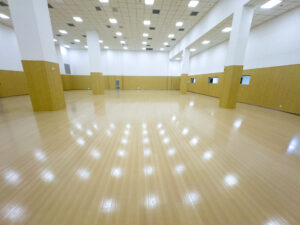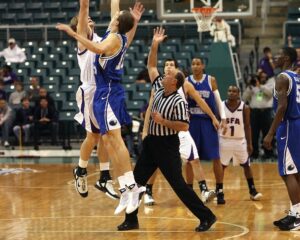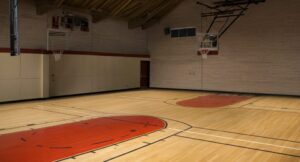In the world of tennis, certain situations can occur during a match, resulting in a player automatically advancing to the next round without having to play. This is known as a “walkover” in tennis.
While it may seem like a rare occurrence, walkovers happen occasionally, and it’s important for players and fans to understand the concept and its implications.
In this article, we will delve into the definition of a walkover in tennis, explore why it can happen, and discuss its impact on the players and the tournament. So, if you’re interested in gaining a deeper understanding of what is a walkover in tennis, keep reading.
Definition of a Walkover in Tennis
Have you ever heard the term “walkover” in tennis and wondered what it means? Well, a walkover, also known as a “W.O.” in the tennis world, is a situation in which one player is declared the winner of a match without even having to step on the court and play a single point.
A walkover in tennis is a situation where a player decides not to participate in their scheduled match and informs the tournament referee before the match begins. It is different from retirement, which occurs when a player drops out of a match midway, conceding victory to their competitor.

Retirements usually happen when a player suffers an injury during the match and can no longer continue playing. In the case of a player getting injured during a match but feeling well enough to complete it, they would typically choose not to retire.
However, once the adrenaline wears off and they start feeling the injury more intensely, they may realize that they are unable to continue playing in the next round. This is when they might inform the tournament referee and declare a walkover.
A walkover can occur for various reasons other than injuries as well. For instance, a player may withdraw from a match for personal reasons, illness, or other unforeseen circumstances.
It is essential for players to communicate their decision to the tournament referee early to avoid any confusion or disruption to the tournament schedule. The term “walkover” derives from the phrase “to walk over,” which means achieving something effortlessly without resistance.
However, a walkover doesn’t necessarily indicate an easy win for the receiving player in tennis. On the contrary, it can present unexpected challenges and disappointments.
From a competitive standpoint, walkovers can be disappointing for both players and fans. The player who receives the walkover advances to the next round without having to compete, missing out on a chance to prove their skills and potentially gain valuable experience.
On the other hand, the player who has to withdraw misses out on the opportunity to compete and potentially win the match. Overall, a walkover in tennis is a victory obtained without actually playing a match.
While it may provide an easy path to the next round, it can also be a source of mixed emotions for both the recipient and the opponent. Ultimately, a walkover is a reminder that unexpected factors can sometimes alter the course of a tennis tournament, adding an element of unpredictability to the sport.
Read More
What Size Tennis Racket Do I Need?
What Are the Different Types of Walkovers in Tennis?
In the world of tennis, there are various types of walkovers that players may choose to take. One of the most common reasons for a walkover is an injury, especially among professional players competing at the highest levels of the sport.
When a player suffers an injury that prevents them from competing, they may opt for a walkover rather than risking further damage or being unable to give their best performance on the court.
Although, walkovers are not limited to injuries alone. In lower-level tournaments, players may decide to take a walkover if they have similar schedules.
Let’s take a closer look at injuries and Scheduling issues.
Injuries Are Common Reasons for Walkovers.
One of the most common reasons, especially at the highest levels of professional tennis, is due to injuries. Injuries can often be the deciding factor for players when it comes to choosing to walk over a match.
While some players may be able to push through and finish the match, especially if the injury occurred towards the end or if they had the adrenaline flowing through their veins acting as a natural painkiller, there are instances where players realize that their injury is more severe than they initially thought.

As soon as the excitement of winning a match wears off, players might start to realize how serious their injury is and that it could seriously hinder their performance.
In such cases, players may make the difficult decision to pull out of their upcoming match to prevent further aggravation of the injury. This decision can be crucial, especially for professional tennis players who rely on their physical abilities to compete at the highest level.
Injuries can vary in severity, ranging from minor sprains and strains to more serious fractures or muscle tears. It may not be easy to skip a match, but it is often the best choice for long-term health and well-being.
Click here to get your desired surface.
If you want to avoid injury, then you can use Copo floor; our synthetic flooring is the ideal choice for your game’s court, offering enhanced performance and safety. Copo Tennis Court floors ensure injury-free gameplay.

Scheduling Reasons for Walkovers.
One of the less common reasons for a player to opt for a walkover instead of playing their scheduled match is due to scheduling issues. This typically happens at recreational or lower-level professional tournaments where players may have overlaps in their schedules.
It is not uncommon for one tournament to start before a player’s current tournament ends. In such cases, players may withdraw from a match in the latter stages of a tournament to participate in the opening rounds of a more prestigious event the following week.

While this practice is not widely seen and is sometimes frowned upon in the tennis world, it is understandable when there are significant stakes involved, such as prize money or ranking points.
In the end, it may be in players’ best interests to withdraw from one tournament in favor of another, regardless of any criticism they may receive. Ultimately, each player’s decision to take a walkover is personal and can vary depending on their circumstances.
It is important to note that while walkovers may be a strategic choice, they are not always well-received by fans or tournament organizers.
It is common for fans to be disappointed when their favorite player walks off a match, and organizers can run into practical challenges regarding rescheduling matches or managing tournament schedules.
Read More
Tennis Walkover Vs Withdrawal
In a match of sports, particularly in the game of tennis, there are moments when players are faced with tough decisions that can greatly impact the outcome of a match. Two decisions that fall under this category are the Walkover and the Withdrawal.
A Walkover is a situation in which a player is declared the winner of a match without even having to step foot on the court. This situation happens when the adversary cannot join the game because of different causes, like being hurt, sick, or disqualified.
Essentially, the player who is unable to play is said to have given the Walkover to their opponent, resulting in an automatic victory for the other player. On the other hand, a Withdrawal takes place when a player decides to quit a match after it has already begun.
A number of factors, including injury, illness, or personal reasons, can influence this decision. When a player withdraws, they essentially forfeit the match, allowing their opponent to be declared the winner.
Both the Walkover and the Withdrawal have their own implications and consequences. In the case of a Walkover, the player who receives the victory without playing may feel a mix of emotions.
On the one hand, they are happy to secure a win without having to make a physical effort on the court. However, they may also feel a sense of disappointment as they were deprived of the opportunity to showcase their skills and compete against their opponent.
For the player unable to participate due to circumstances leading to a Walkover, it can be a frustrating experience. They may feel a sense of regret and disappointment for not being able to compete and show their best performance.
However, it is also important to prioritize their health and well-being, especially in cases of injury or illness. In the case of a Withdrawal, it can be a tough decision for a player to make.
It is possible that they are experiencing physical pain or discomfort, which hinders their ability to play. It is also possible for them to withdraw from the match due to personal circumstances or unforeseeable events that require their immediate attention, forcing them to take time off.
Despite the circumstances, the player who withdraws must accept the consequences of forfeiting the match and acknowledge their opponent as the rightful winner.
In short, in either case, the consequences of a Walkover or a Withdrawal can greatly impact the outcome of a match and the overall tournament. These decisions highlight the unpredictable nature of sports and the need for players to make tough decisions when necessary.
The Difference Between a Walkover and a Default.
In the world of sports, two terms often come up: walkover and default. While they both refer to a player forfeiting a match, there are some key differences between the two.
In a match of sports, specifically tennis, there are instances when a player has to face the results of their actions. One such consequence is a default. Due to a violation of the rules or code of conduct, a player becomes a default and forfeits the match.
This can happen for a variety of reasons, such as being late to the match, displaying bad behavior, or not adhering to the tournament’s dress code. In more severe cases, a player may also be defaulted if they are injured but refuse to retire from the match.
When a player is defaulted, it means they automatically lose the match, and their opponent is declared the winner, advancing to the next round. This outcome is recorded as a “DEF” or “default” on the tournament scoreboard, serving as a reminder of the player’s actions.
The consequences of a default can be detrimental to a player’s career, as it may lead to fines, suspensions, or even a ban from future tournaments. Default is not something to be taken lightly.
It is a reminder that players are expected to conduct themselves professionally and with sportsmanship both on and off the court. The rules and codes of conduct in place maintain the game’s integrity and ensure fair play. When these rules are violated, the consequences can be significant.
It is important for players to understand the implications of a default and to strive to avoid situations that could lead to such an outcome.
Being punctual, displaying good sportsmanship, and adhering to the tournament’s guidelines are all essential aspects of being a professional athlete. By doing so, players can not only avoid the negative effects of default but also uphold the values and spirit of the sport.
Examples of Famous Walkovers in Tennis History
It’s no secret that there have been several notable walkovers in professional tennis, where a player cannot participate in the match, and their opponent wins. These walkovers have occurred in spite of the high stakes involved, including millions of dollars, ranking points, and high-profile trophies.
2014 Roger Federer ATP Finals
One of the most memorable walkovers in men’s tennis took place at the 2014 ATP Finals involving the legendary Roger Federer. Federer, who was plagued by persistent back problems, was set to face his long-term rival Novak Djokovic in what was anticipated to be an exhilarating match.
However, in the semi-finals, Federer was forced to withdraw from the championship match after battling to a three-set victory against his Davis Cup teammate, Stan Wawrinka.
This unexpected turn of events handed Djokovic the win by default, robbing tennis fans of the highly expected clash between the two titans of the sport.
Despite the disappointment, Djokovic graciously accepted the victory and went on to participate in an exhibition match against Andy Murray. The walkover involving Federer at the 2014 ATP Finals served as a reminder of the physical toll that professional tennis can take on even the most elite athletes.
It highlighted the importance of staying healthy and injury-free to compete at the sport’s highest level. While walkovers are not uncommon in tennis, they often upset the emotions of both players and fans.
French Open 2016 – Rafael Nadal
Another of the most memorable walkovers in tennis history occurred in the 2016 French Open when Rafael Nadal, widely regarded as the king of Clay, had to withdraw from the tournament due to a wrist injury.
This highly anticipated event occurred after Nadal successfully defeated Argentina’s Facundo Bagnis in the second round. The news of Nadal’s withdrawal shocked fans and players alike.
This withdrawal was particularly significant because Nadal is known for his exceptional skills on clay courts, and the French Open is considered his playground.
His absence from the tournament created a void deeply felt by players and fans alike. Despite the disappointment, all respected Nadal’s decision to focus on his health and recovery.
It was a walkover that left a lasting impact on the tennis community and further cemented Nadal’s place in the history of the sport.
Walkover Wimbledon 2022: Rafael Nadal.
In the game of tennis, walkovers can be both disappointing and surprising. One such memorable moment took place during the 2022 Wimbledon Championships involving the legendary Rafael Nadal.
Unfortunately, Nadal’s journey in the tournament was cut short due to an abdominal tear he suffered during his quarter-final match against Taylor Fritz. As a result, he had no choice but to withdraw from his highly anticipated semi-final clash with Australian sensation Nick Kyrgios.
In short, These occurrences affect individual matches and tournaments and shape players’ expectations and careers. As fans, we continue to appreciate the dedication and perseverance displayed by these athletes, even in the face of unexpected challenges.
Conclusion
A walkover in tennis refers to a situation where one player or team is awarded a victory without having to compete due to various reasons such as injury, disqualification, or withdrawal of the opponent.
While walkovers may not offer the same level of excitement as a closely contested match, they are a common occurrence in the sport and can have significant implications for players’ rankings, tournament progress, and overall career.
Although some may view walkovers as disappointing, they serve as a reminder of the unpredictable nature of sports and the importance of physical and mental well-being in the competitive world of tennis.
FAQs
What is Meant by Walkover in Tennis?
A walkover in tennis refers to a situation where one player wins a match without having to play a single point. This can occur if the opponent withdraws from the match before it begins, is unable to continue due to injury or illness, or is disqualified for various reasons.
In such cases, the player who receives the walkover automatically advances to the next round or wins the match without having to compete.
What is Won by Walkover?
A walkover is a term used in sports to describe a situation where one player wins a match or competition without having to compete. This can occur when the opposing team or player is unable to participate for various reasons, such as injury, disqualification, or withdrawal. In such cases, the player that remains in the competition is awarded victory by a walkover.
What is the Difference Between a Walkover and a Default in Tennis?
A walkover in tennis refers to a situation where one player wins a match without actually playing it. This can happen when the opponent cannot compete due to injury, illness, or any other valid reason that prevents them from participating.
On the other hand, a default occurs when a player violates the rules or code of conduct and forfeits the match. This can result from being late, displaying unsportsmanlike behavior, or failing to adhere to the tournament’s dress code.









